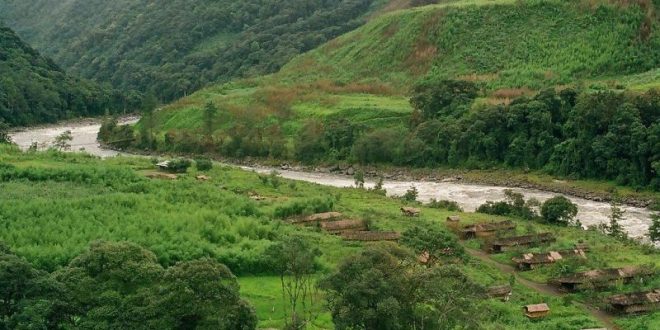Ever thought about how a river might tell its own story? Not just about currents and fish, but about the people who lived alongside it, depended on it, and shaped it? Well, creating a people’s biography of a river lets you do just that. And with the wealth of digital archives available, especially those focusing on the Northeast, it’s easier than you might think to dive in and uncover some amazing stories. You’ll find that this approach gives a voice to the everyday folks who often get left out of the history books.
The Power of Digital Archives in River Biographies
Accessibility and Democratization of Information
Seriously, these digital archives are game-changers. Imagine being able to access historical documents, photos, and maps from your own home! Northeast universities and historical societies have been doing a stellar job of putting these resources online. This access is not just convenient, it actually makes history more democratic. Anyone – students, researchers, or just plain curious folks – can dig in and form their own interpretations. No more relying solely on what’s handed down from on high, you know?
Preserving Fragile and Ephemeral Sources
Think about old photographs, faded letters, and brittle newspapers. These things don’t last forever. Digitization is like giving them a superpower – immortality! By preserving these fragile sources, we ensure that future generations can connect with the past in a very real way. It’s kind of like time travel, but with better Wi-Fi, wouldn’t you say?
Facilitating Interdisciplinary Research
Here’s where it gets really cool. Digital archives make it super easy for people from different fields to collaborate. Historians, environmental scientists, geographers – they can all use the same data to explore how a river has been shaped by society, the economy, and the environment. It’s like putting together a giant jigsaw puzzle where each piece is a different discipline. Makes you wonder what amazing discoveries are still waiting to happen, right?
Building a People’s Biography: Key Sources and Methodologies
Oral Histories: Capturing Lived Experiences
Okay, if you want to really understand a river’s story, you gotta listen to the people who lived it. Oral histories are goldmines of personal memories and perspectives. They tell you about the river’s cultural significance, the changes it’s gone through, and the challenges faced by the communities along its banks. Did you ever think about the river having a “personality” because of those who lived by it? I do!
Photographs and Visual Records: A Window to the Past
A picture is worth a thousand words, as they say. Old photos, postcards, maps…they give you a visual sense of how a river’s landscape has changed over time. You can see how land was used, how industries developed, and how people viewed the river’s beauty. It’s like watching a movie of the past, one frame at a time.
Local Newspapers and Community Records: Chronicling Daily Life
Want to know what life was really like for folks who depended on the river? Dig into local newspapers, church records, and town meeting minutes. These sources reveal the everyday details – the economic activities, the social customs, the impact of floods and droughts. It’s like eavesdropping on history!
Leveraging Geographic Information Systems (GIS)
Alright, this is where we get a little technical, but trust me, it’s worth it. GIS lets you map historical data related to the river – land ownership, industrial sites, environmental changes. This gives you a spatial understanding of the river’s history and how it relates to the surrounding landscape. It’s like creating a living map that tells a story.
Case Studies: Examples from the Northeast
The Connecticut River: A Working River
The Connecticut River is a perfect example of a “working river.” Digital archives can show you how it was used for transportation, industry, and agriculture, and how that shaped the lives of the people who lived along its banks. It’s a story of hard work, innovation, and resilience.
The Merrimack River: A Story of Industrialization and Environmental Degradation
The Merrimack River tells a different story – one of industrialization and environmental degradation. Digital resources can document the river’s history as a textile manufacturing hub and the environmental consequences that followed. But it’s also a story of restoration and hope.
The Hudson River: Art, History, and Environmentalism
The Hudson River is a cultural icon, and digital archives reflect that. You can find artistic representations of the river, historical accounts of its importance, and data on its environmental challenges. It’s a story that combines art, history, and a deep concern for the environment. I wonder, can rivers really be muses?
Challenges and Opportunities
Addressing Bias and Representational Gaps
Now, let’s be honest, not all voices are equally represented in historical archives. It’s important to be aware of potential biases and make an effort to include the stories of marginalized communities. This is about making sure everyone’s voice is heard.
Ensuring Data Quality and Accuracy
Just because something is online doesn’t mean it’s true! It’s crucial to verify the accuracy of digital data and maintain its integrity. After all, we want to build a reliable and trustworthy historical narrative.
Engaging with Local Communities
This is a big one. Collaborating with local communities is essential. They can provide valuable information, offer different perspectives, and help ensure that the people’s biography of the river is a truly collaborative and inclusive endeavor. It’s their story, after all!
Creating a people’s biography of a river, especially using the awesome resources in Northeast digital archives, can be an incredibly rewarding experience. You not only connect with the past, but you also gain a deeper understanding of the present. And who knows, maybe you’ll even inspire future generations to care for these vital waterways. Why not give it a shot and see what stories you can uncover? You might be surprised at what you find.
 Cloudabouts
Cloudabouts



